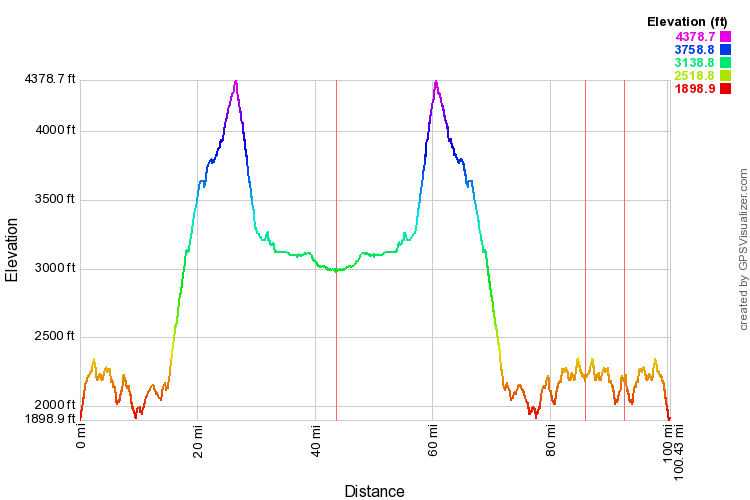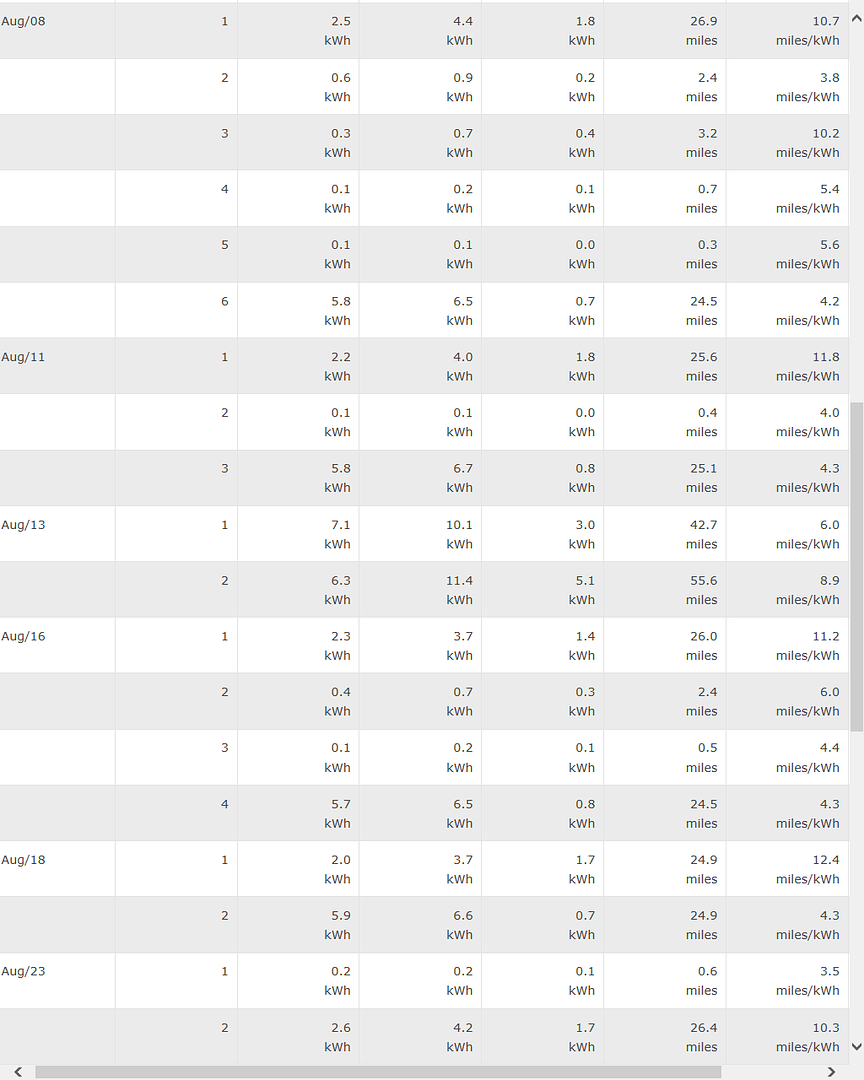Stoaty said:
edatoakrun said:
On my most recent range/capacity test on 8/15/16 I got ~101.1 total miles, and ~6,500 ft. total ascent and descent, using the capacity from "100%"/192 gids to VLBW/24 gids.
At what average speed? What average speed on the uphill portion? What efficiency from the dash?
Slow, only a few mph slower, and 7.4 m/kWh, using CarWings/NC reports of 98.3 miles/~13.4 kWh.
But the CW miles are obviously incorrect, and I don't find that ~13.4 kWh use report plausible over this route of 100.43 miles and~6460 ft ascent and descent (plus another ~0.7 miles and ~150 ft of descent and ascent on my driveway that Google can't map):

So, using
actual miles driven/
estimated actual kWh use:
101.1 miles/14.7 kWh =~6.9 m/kWh
See the explanation I posted on p 735, RE another long trip:
="Stanton" What was your miles/kW?
There are many incorrect ways to answer that question (three of which are below) and one fairly accurate
correct answer.
Below are the results for the entire Vacaville (Nut Tree Plaza L2) to Corning (Heritage RV park) segment of my trip:
Actual miles driven/LBC (
gid) kWh use report:
~114.4/14.3 = 8.0 m/kWh
Odometer miles driven/CarWings kWh use report (
the Nav screen m/kWh display):
114.2/14.8 = 7.7 m/kWh
CarWings miles driven/CarWings kWh use report (
the dash m/kWh display):
111.4/14.8 =7.5 m/kWh
Actual miles driven/estimated actual kWh use:
~114.4/~16.5 = ~6.9 m/kWh
Back to "average speed" of the 8/13 trip.
That might be a misleading gauge of efficiency on a trip like this, with such varying terrains and speeds.
The ~35 miles of 55mph highway was driven mostly at 30 to 45 mph.
The ~55 miles of lower-speed paved roads was driven mostly at 20 to 30 mph.
The ~10 miles of gravel and cinder roads were all driven under 20 mph.
Additionally, I try to limit kW use to 20 below the LBW ( which I got twice, at 59.8 and again at 79.0 odometer miles) and 10 kW after the VLB, which I go at 97.9 miles.
That means I try limit my speed to ~20 mph on the second ascent of Hatchet mountain (I actually did the last mile at ~15 mph behind a slow truck on 8/13/16) and it takes me close to 10 minutes for the final steep climb up my driveway.
I can tell you the total time for the first trip on 8/13 ( see report below) was ~114 minutes, and the return trip (with the additional miles driven, all off-highway, to bring the pack to VLB) took ~167 minutes, but both of those times include many stops for four stop signs, four stoplights, two stops for other reasons, and most significantly, at least a dozen full stops (sometimes waiting for several minutes to let the road clear) required to let faster traffic pass on the highway.

That's probably the slowest I've ever driven this route, and probably the last time I'll be trying for 100 miles without driving past the VLBW.
Traffic is far heavier on this route than it was when I started driving this trip in my LEAF in 2011 (during the great recession, when gas cost ~$5 a gallon).
Now, having to pull over and stop on the two-lane highway for passing vehicles so frequently (and I try to do so
before I obstruct them) when I drive this slowly is not only a PIA, but using the friction brakes to do so reduces overall efficiency and range.
And while there is, IMO, little chance my pack has actually lost ~31% of available (or total) capacity since delivery as my LBC indicates, I estimate (from metered recharge capacity) that my available capacity is down ~20% from that available from a 24kWh total pack, and probably about 17% less than It had available at delivery ~47k miles ago.






